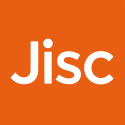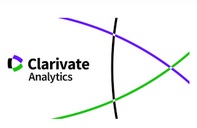Curiosity as a moderating variable between Impulsivity and Entrepreneurial Orientation
Abstract
The objective of the present study is to analyze whether the variable Curiosity is a moderating variable between Impulsivity and Entrepreneurial Orientation. The multi-occupational sample of 883 Spanish and Colombian employees (49% men, 51% women) was obtained through non-probabilistic sampling. The data collected were processed with the SPSS 23.0 program. Statistically significant correlations were found among all the research variables except for Functional Impulsivity. Finally, empirical evidence indicates that Curiosity-D plays a moderating role between Dysfunctional Impulsivity and Entrepreneurial Orientation in the sense that Curiosity-D (understood as a quantitative variable) affects the intensity of the relationship between Dysfunctional Impulsivity (predictor variable) and Entrepreneurial Orientation (criterion variable).
Downloads
References
Aiken, L. S., & West, S. (1991). Multiple regression: Testing and interpreting interactions. Newbury Park, CA: Sage.
Berlyne, D. E. (1950). Novelty and curiosity as determinants of exploratory behaviour. British Journal of Psychology. General Section, 41, 68–80. https://doi.org/10.1111/j.2044-8295.1950.tb00262.x
Berlyne, D. E. (1954). A theory of human curiosity. British Journal of Psychology. General Section, 45, 180–191. https://doi.org/10.1111/j.2044-8295.1954.tb01243.x
Berlyne, D. E. (1960). Conflict, arousal, and curiosity. New York: McGraw-Hill Book Company. https://doi.org/10.1037/11164-000
Boada-Grau, J., Sánchez-García, J. C., Viardot, E., Boada-Cuerva, M., & Vigil-Colet, A. (2016). Adaptation of an entrepreneurial motivation scale into Spanish, 32, 571–577. https://doi.org/10.6018/analesps.32.2.208381
Bolton, D. L., & Lane, M. D. (2012). Individual entrepreneurial orientation: development of a measurement instrument. Education + Training, 54, 219–233. https://doi.org/10.1108/00400911211210314
Busenitz, L. W., & Barney, J. B. (1997). Differences between entrepreneurs and managers in large organizations: Biases and heuristics in strategic decision-making. Journal of Business Venturing, 12(1), 9–30. https://doi.org/10.1016/S0883-9026(96)00003-1
Chico, E., Tous, J. M., Lorenzo-Seva, U., & Vigil-Colet, A. (2003). Spanish adaptation of Dickman’s impulsivity inventory: Its relationship to Eysenck’s personality questionnaire. Personality and Individual Differences, 35, 1883–1892. https://doi.org/10.1016/S0191-8869(03)00037-0
Chung, L. H., & Gibbons, P. T. (1997). Corporate Entrepreneurship: The roles of ideology and social capital. Group and Organization Management, 22, 10–30. https://doi.org/10.1177/1059601197221004
Cohen, J. (1992). A power primer. Psychological Bulletin, 112, 155–159.
Cohen, J. (2003). Applied multiple regression/correlation analysis for the behavioral sciences (3rd ed.). Mahwah, NJ: L. Erlbaum Associates.
Collins, R. P., Litman, J. A., & Spielberger, C. D. (2004). The measurement of perceptual curiosity. Personality and Individual Differences, 36, 1127–1141. https://doi.org/10.1016/S0191-8869(03)00205-8
Covin, J. G., & Slevin, D. P. (1989). Strategic management of small firms in hostile and benign environments. Strategic Management Journal, 10, 75–87. https://doi.org/10.1002/smj.4250100107
Cromie, S. (2000). Assessing entrepreneurial inclinations: Some approaches and empirical evidence. European Journal of Work and Organizational Psychology, 9, 7–30. https://doi.org/10.1080/135943200398030
Dickman, S. J. (1990). Functional and dysfunctional impulsivity: Personality and cognitive correlates. Journal of Personality and Social Psychology, 58, 95–102. https://doi.org/10.1037/0022-3514.58.1.95
Dickman, S. J. (1993). Impulsivity and Information Processing. In The Impulsive Client: Theory, Research, and Treatment (pp. 151–184). Washington: American Psychological Association. https://doi.org/10.1037/10500-010
Dickman, S. J. (2000). Impulsivity, arousal and attention. Personality and Individual Differences, 28, 563–581. https://doi.org/10.1016/S0191-8869(99)00120-8
Elliot, A. J. (1999). Approach and avoidance motivation and achievement goals. Educational Psychologist, 34, 169–189. https://doi.org/10.1207/s15326985ep3403_3
Elliot, A. J., & Church, M. A. (1997). A hierarchical model of approach and avoidance achievement motivation. Journal of Personality and Social Psychology, 72, 218–232. https://doi.org/10.1037/0022-3514.72.1.218
Elliot, A. J., McGregor, H. A., & Gable, S. (1999). Achievement goals, study strategies, and exam performance: A mediational analysis. Journal of Educational Psychology, 91, 549–563. https://doi.org/10.1037/0022-0663.91.3.549
Fernández-Laviada, A., & Rueda, M. (2011). La actitud emprendedora: una década de investigacion y análisis de los estudiantes de la Facultad de Ciencias Económicas y Empresariales de la Universidad de Cantabria. 1er encuentro internacional AECA en America latina.
Fillis, I., & Rentschler, R. (2010). The role of creativity in entrepreneurship. Journal of Enterprising Culture, 18, 49–81. https://doi.org/10.1142/S0218495810000501
Gupta, D. R., Veliyath, R., & George, R. (2018). Influence of national culture on IPO activity. Journal of Business Research, 90, 226–246. https://doi.org/10.1016/j.jbusres.2018.04.023
Hernández, N. B., Intriago, R. V. G., Espinoza, J. C. G., & Vásconez, P. J. D. (2018). Competencia de emprendimiento como sustento de la formación integral e inserción social del estudiante. Revista Órbita Pedagógica., 4, 9–12.
Hernández, R., Fernández, C., & Baptista, P. (2004). Metodología de la Investigación. México: McGraw-Hill Interamericana.
Jeraj, M., Maric, M., Todorovic, I., & Cudanov, M. (2015). The Role of Openness and Entrepreneurial Curiosity in Company’s Growth. Amfiteatru Economic Journal, 17, 371–389.
Kerlinger, F., & Lee, H. (2002). Investigación del comportamiento. Métodos de investigación en ciencias sociales. México: McGraw Hill.
Kleinbaum, D. G., Kupper, L. L., & Muller, K. (1988). Applied regression analysis and other multivariate methods. Boston: PWS-Kent.
Lee, S. M., Lim, S., & Pathak, R. D. (2011). Culture and entrepreneurial orientation: a multi-country study. International Entrepreneurship and Management Journal, 7, 1–15. https://doi.org/10.1007/s11365-009-0117-4
Litman, J. A. (2005). Curiosity and the pleasures of learning: Wanting and liking new information. Cognition & Emotion, 19, 793–814. https://doi.org/10.1080/02699930541000101
Litman, J. A. (2008). Interest and deprivation factors of epistemic curiosity. Personality and Individual Differences, 44, 1585–1595. https://doi.org/10.1016/j.paid.2008.01.014
Litman, J. A., Hutchins, T., & Russon, R. (2005). Epistemic curiosity, feeling-of-knowing, and exploratory behaviour. Cognition & Emotion, 19, 559–582. https://doi.org/10.1080/02699930441000427
Litman, J. A., & Jimerson, T. L. (2004). The Measurement of Curiosity As a Feeling of Deprivation. Journal of Personality Assessment, 82, 147–157. https://doi.org/10.1207/s15327752jpa8202_3
Litman, J. A., & Spielberger, C. D. (2003). Measuring Epistemic Curiosity and Its Diversive and Specific Components. Journal of Personality Assessment, 80, 75–86. https://doi.org/10.1207/S15327752JPA8001_16
Loewenstein, G. (1994). The psychology of curiosity: A review and reinterpretation. Psychological Bulletin, 116, 75–98. https://doi.org/10.1037/0033-2909.116.1.75
McMullen, J. S., & Shepherd, D. A. (2006). Entrepreneurial Action And The Role Of Uncertainty In The Theory Of The Entrepreneur. Academy of Management Review, 31(1), 132–152. https://doi.org/10.5465/amr.2006.19379628
Olson, P. D. (1985). Entrepreneurship: Process and Abilities. American Journal of Small Business, 10, 25–31. https://doi.org/10.1177/104225878501000103
Paulus, M. P. (2007). Decision-Making Dysfunctions in Psychiatry Altered Homeostatic Processing? Science, 318, 602–606. https://doi.org/10.1126/science.1142997
Rauch, A., Wiklund, J., Lumpkin, G. T., & Frese, M. (2009). Entrepreneurial Orientation and Business Performance: An Assessment of Past Research and Suggestions for the Future. Entrepreneurship Theory and Practice, 33, 761–787. https://doi.org/10.1111/j.1540-6520.2009.00308.x
Robinson, D. A. (2008). Keeping pace with change in SMEs: creating and maintaining congruence and consistency in SMEs in transition economies. International Journal of Entrepreneurship and Innovation Management, 8, 272–285. https://doi.org/10.1504/IJEIM.2008.019530
Robinson, S., & Stubberud, H. A. (2014). Elements of entrepreneurial orientation and their relationship to entrepreneurial intent. Journal of Entrepreneurship Education, 17, 1–11.
Salinas, F., & Osorio, L. (2012). Emprendimiento y Economía Social, oportunidades y efectos en una sociedad en transformación. CIRIEC-España, Revista de Economía Pública, Social y Cooperativa, (75), 129–151. https://doi.org/0213-8093
Sánchez-García, J. C. (2010). Evaluación de la personalidad emprendedora: Validez factorial del cuestionario de orientación emprendedora (COE). Revista Latinoamericana de Psicologia, 42, 41–52. Retrieved from http://www.redalyc.org/html/805/80515880004/
Spielberger, C. D., & Starr, L. (1994). Curiosity and exploratory behavior. In H. F. O’Neil & M. Drillings (Eds.), Motivation : theory and research (pp. 221–243). Hillsdale, NJ: Lawrence Earlbaum Associates, Inc.
Tan, J. (1996). Regulatory Environment and Strategic Orientations in a Transitional Economy: A Study of Chinese Private Enterprise. Entrepreneurship Theory and Practice, 21(1), 31–46. https://doi.org/10.1177/104225879602100103
Tan, J. (2001). Innovation and risk-taking in a transitional economy: A comparative study of chinese managers and entrepreneurs. Journal of Business Venturing, 16, 359–376. https://doi.org/10.1016/S0883-9026(99)00056-7
Vecchio, R. P. (2003). Entrepreneurship and leadership: common trends and common threads. Human Resource Management Review, 13, 303–327. https://doi.org/10.1016/S1053-4822(03)00019-6
Voss, H., & Keller, H. (1983). Curiosity and Exploration. Theories and Results. New York: AcademicPress. Inc.
Wiklund, J., Yu, W., Tucker, R., & Marino, L. D. (2017). ADHD, Impulsivity and Entrepreneurship. Journal of Business Venturing, 32, 627–656. https://doi.org/10.1016/J.JBUSVENT.2017.07.002
Yar Hamidi, D., Wennberg, K., & Berglund, H. (2008). Creativity in entrepreneurship education. Journal of Small Business and Enterprise Development, 15, 304–320. https://doi.org/10.1108/14626000810871691
Zuckerman, M. (1994). Behavioral expressions and biosocial bases of sensation seeking. Cambridge: Cambridge University Press.
-
Abstract1092
-
pdf708
Copyright (c) 2021 Servicio de Publicaciones, University of Murcia (Spain)

This work is licensed under a Creative Commons Attribution-ShareAlike 4.0 International License.
The works published in this journal are subject to the following terms:
1. The Publications Service of the University of Murcia (the publisher) retains the property rights (copyright) of published works, and encourages and enables the reuse of the same under the license specified in paragraph 2.
© Servicio de Publicaciones, Universidad de Murcia, 2022
2. The works are published in the online edition of the journal under CC BY-SA 4.0 license, a Creative Commons Reconocimiento-CompartirIgual 4.0 (legal text). You are free to:
- Share: copy and redistribute the material in any medium or format for any purpose, even commercially.
- Adapt: remix, transform, and build upon the material for any purpose, even commercially.
The licensor cannot revoke these freedoms as long as you follow the license terms, under the following terms:
- Attribution: You must give appropriate credit , provide a link to the license, and indicate if changes were made . You may do so in any reasonable manner, but not in any way that suggests the licensor endorses you or your use.
- ShareAlike: If you remix, transform, or build upon the material, you must distribute your contributions under the same license as the original.
No additional restrictions: You may not apply legal terms or technological measures that legally restrict others from doing anything the license permits.
This work is licensed under a Creative Commons Attribution-ShareAlike 4.0 International License.
3. Conditions of self-archiving. Is allowed and encouraged the authors to disseminate electronically pre-print versions (version before being evaluated and sent to the journal) and / or post-print (version reviewed and accepted for publication) of their works before publication, as it encourages its earliest circulation and diffusion and thus a possible increase in its citation and scope between the academic community. RoMEO Color: Green.














